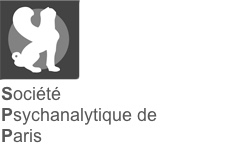|
Abstract:
|
This paper presents the case of a patient on the autistic spectrum (ASD) and proposes a theoretical and technical model which seeks to illustrate the characteristics of the relational and intersubjective perspective in psychoanalysis. Along a complementary axis this perspective combines the knowledge which psychoanalytic research, starting from Kanner and Asperger, has developed through the studies by among others Tustin and Meltzer. The model is conceived from the vertex of a psychoanalysis which seeks to deal with disorganized and unrepresentable states of mind. Important is the personality of the analyst, who must be prepared to experience nothingness, meaninglessness and the chaos of a contiguous-autistic (CA) position. We can then consider a wider oscillation in the field in addition to PS↔D, namely CA↔PS↔D. Disorganized states of mind exist that result from a cumulative trauma which occured very early on, during the pre-natal or at least pre-verbal and pre-representational stages of psychic development.
Such states then become the effect of a basic deficit that the analytic field can oneirically transform into trauma which, through reciprocity, micro-attunements, the encounter with the analyst's negative capability and rêverie, can then evolve into a traumatic experience which can finally be subjected to symbolic alphabetization.
|





